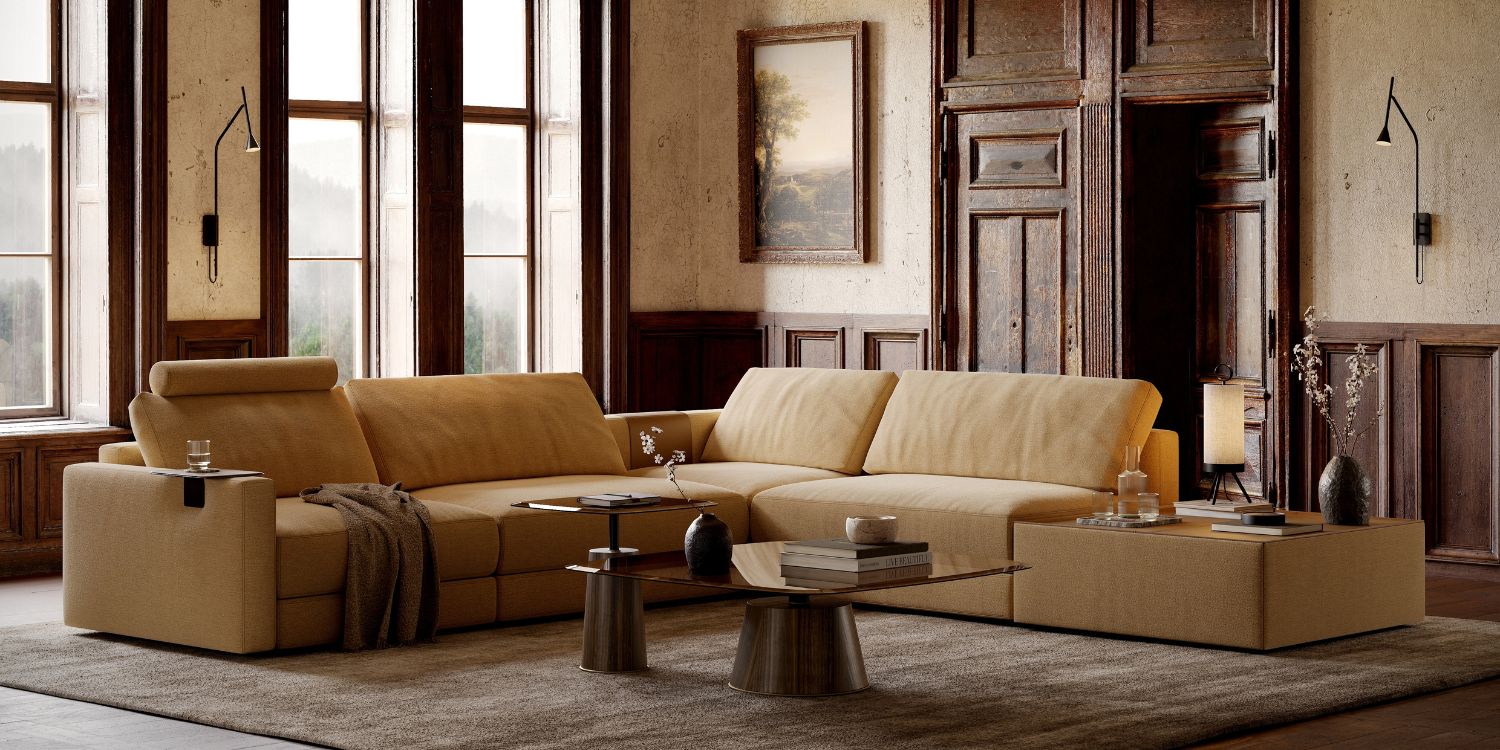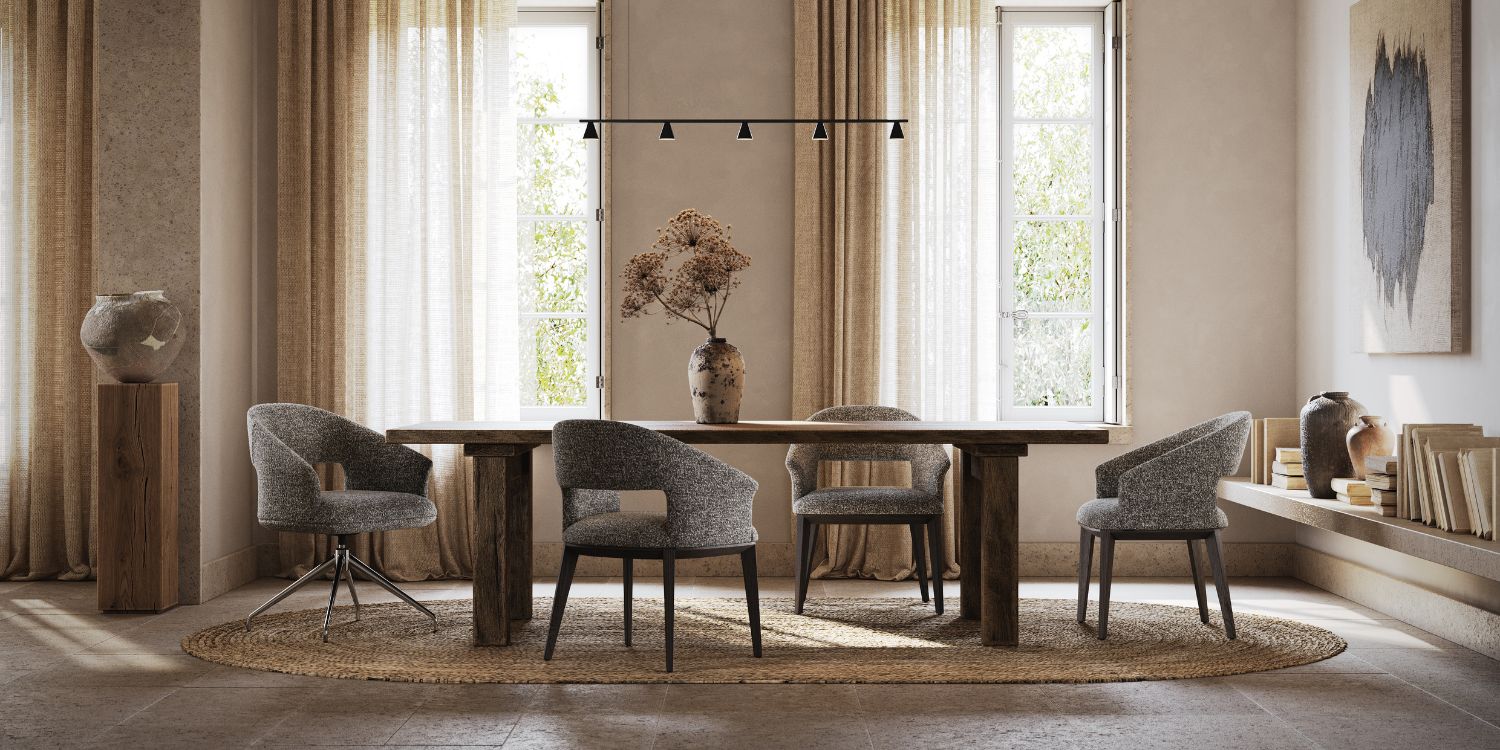We work daily to stay current with design trends and bring you novelties in every article we write. Today could not be any different—meet Hygge!
In recent years, Hygge has gained worldwide attention as a design trend, but its roots run deep in Danish culture. Pronounced “hoo-gah,” Hygge is more than just an aesthetic; it’s a lifestyle philosophy focused on comfort, warmth and connection.
In interior design, this concept transforms spaces into atmospheres of serenity, inviting relaxation and togetherness. Let’s explore how to bring Hygge into your project with simple yet impactful design choices that emphasise comfort, cosiness and personal well-being!
Hygge: The Concept
Often described as the “art of creating intimacy,” Hygge is about embracing warmth, comfort and a sense of belonging, alone and with others.
The word Hygge doesn’t translate perfectly into English, but it’s a lifestyle philosophy that values being present, savouring comfort and prioritising the things that make life feel rich and fulfilling. Also, it’s about slowing down, surrounding yourself with warmth and celebrating togetherness. In Denmark, this approach is deeply woven into everyday life and is thought to contribute to Danes’ reputation as some of the happiest people in the world!
In design, Hygge translates into warm lighting, inviting furniture, natural materials and minimalist decor that avoids clutter. It’s about creating a space that feels welcoming and fosters relaxation, making you feel at ease the moment you walk in. Essentially, it encourages to design projects with intention, choosing items that add comfort, joy and a sense of calm.
1. Design for Comfort and Practicality
A big part of Hygge is creating spaces that feel effortless and welcoming, not overly polished. Focus on creating an environment that encourages relaxation:
- Comfort-First Furniture: Select pieces that prioritise comfort, like an upholstered sofa or an overstuffed armchair. When people enter a hygge space, they should feel as though they can sink into the furniture and unwind.
- Thoughtful Layouts: Arrange furniture to encourage conversation and togetherness. Instead of facing all seating towards a TV, position armchairs and sofas so they face each other to foster intimate gatherings.
- Minimalism with Meaning: Hygge encourages keeping spaces free of clutter but not entirely devoid of personality. Surround the room with meaningful items for your client—books, family photos or artwork—that spark joy and make the home feel unique.
2. Choose Cosy Textures
Hygge is all about textures that invite the user to sink in, stay warm and feel wrapped in comfort. Integrate these textures for a truly cosy ambience:
- Throws and Blankets: Keep soft, oversized blankets and throws draped over chairs and sofas. Natural fibres like wool, cotton and cashmere work well for warmth and touch.
- Layered Rugs: Rugs add warmth and texture underfoot, especially in cold months. Layering different rugs—think a fluffy rug over a woven one—adds dimension and invites people to unwind.
- Pillows: Plush pillows in various shapes, sizes and materials create a soft, inviting place to rest. Linen, velvet and faux fur are all popular choices for hygge pillows.
3. Think Soft Lighting
Lighting is one of the most crucial elements of Hygge. Actually, Danes are famous for their use of candles, believing that warm ambient light brings a sense of calm and intimacy to any setting!
- Candles: Place candles throughout the space, especially in living rooms, bedrooms and dining areas. Unscented candles provide a warm glow that doesn’t overwhelm, while seasonal candles can add subtle fragrance for an extra cosy touch.
- Soft Lighting Fixtures: Opt for lamps with warm-coloured bulbs instead of harsh overhead lights. Also, consider fixtures like floor lamps, table lamps and string lights to create a gentle, layered lighting scheme.
4. Emphasise Togetherness
As said above, Hygge is about bringing people together. It encourages designing spaces that invite friends and family to relax, connect and enjoy each other’s company. Consider these ways to foster social interaction in your project:
- Communal Dining Areas: Opt for a dining table that can accommodate a large family. Include comfortable seating and dim lighting to set a relaxed, welcoming tone for shared meals.
- Game and Gathering Spaces: Create areas in which people can gather for board games, movies or conversations. This can be as simple as a cosy living room setup or a den with enough floor space for everyone to sit together comfortably.
- Outdoor Comfort: If the project has outdoor space, extend Hygge to the garden, porch or balcony. Include blankets, lanterns and comfortable seating so the user can enjoy the cosiness of Hygge in the fresh air.
5. Bring Nature Indoors
Hygge is rooted in simplicity and an appreciation for nature, so incorporating natural elements brings a calming, grounded feel to a space. Some ways to add a natural touch include:
- Greenery: Houseplants, from lush fiddle-leaf figs to hardy succulents, bring freshness and vibrancy to indoor spaces. Plants also purify the air, promoting a healthier living environment.
- Wood and Stone Accents: Wooden furniture, stone vases or ceramic pottery lend a raw, earthy quality to the home. For tables and other key pieces, consider sustainably sourced wood or reclaimed materials to add visual warmth and eco-friendly charm.
- Seasonal Decor: Decorate with items that celebrate the seasons, like dried leaves or flowers in fall and fresh blooms in spring. Seasonal touches add a sense of rhythm to the home that’s grounding and inviting.
Ready to Use Hygge in Your Next Project?
Infusing your project with Hygge transforms it into a place where comfort, calm and connection take centre stage. Whether it’s a cosy nook to relax with a cup of tea or a dining area where friends gather, this concept is about fostering a sense of warmth and well-being.
In a world that can feel hectic and fast-paced, Hygge encourages us to slow down, savour the small moments and enjoy our homes in a meaningful way. So light a candle, wrap up in a blanket and welcome the beauty of Hygge into your life.
We are working every day to bring you the most stylish ideas to fulfil your inspiration and to create the best interior design projects so feel free to follow our Instagram Page and subscribe to our newsletter.
























